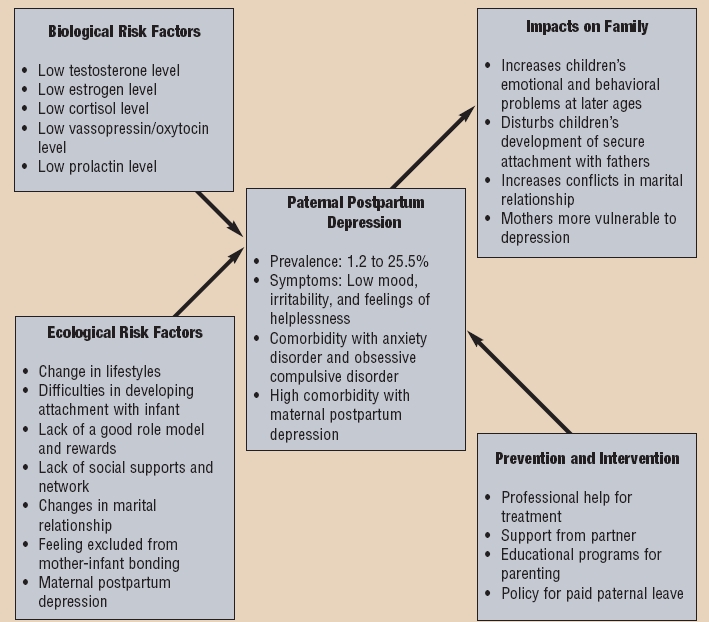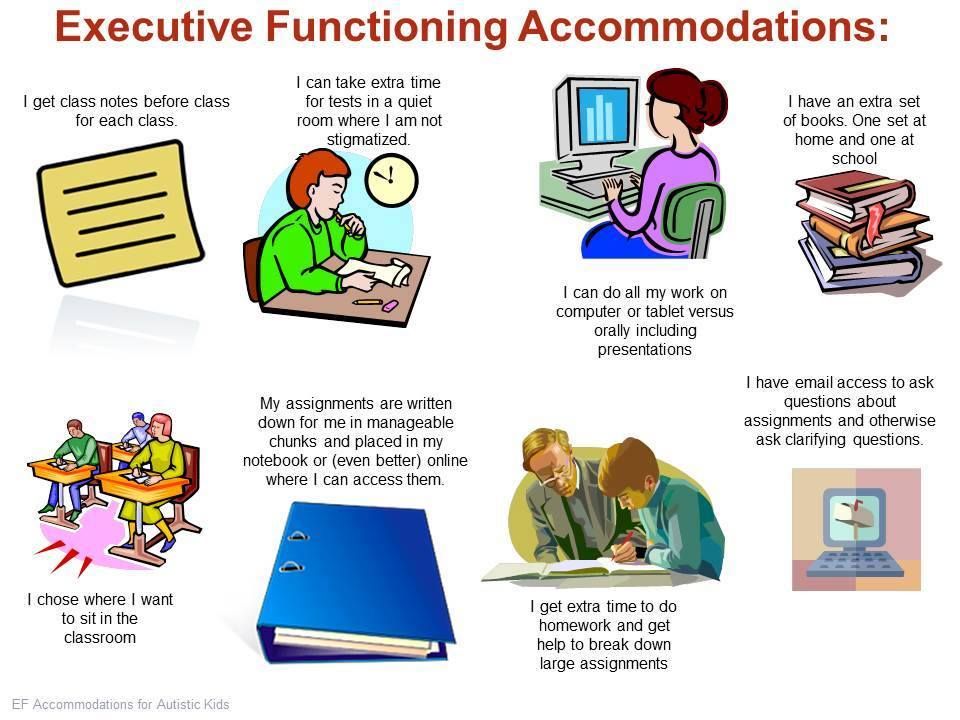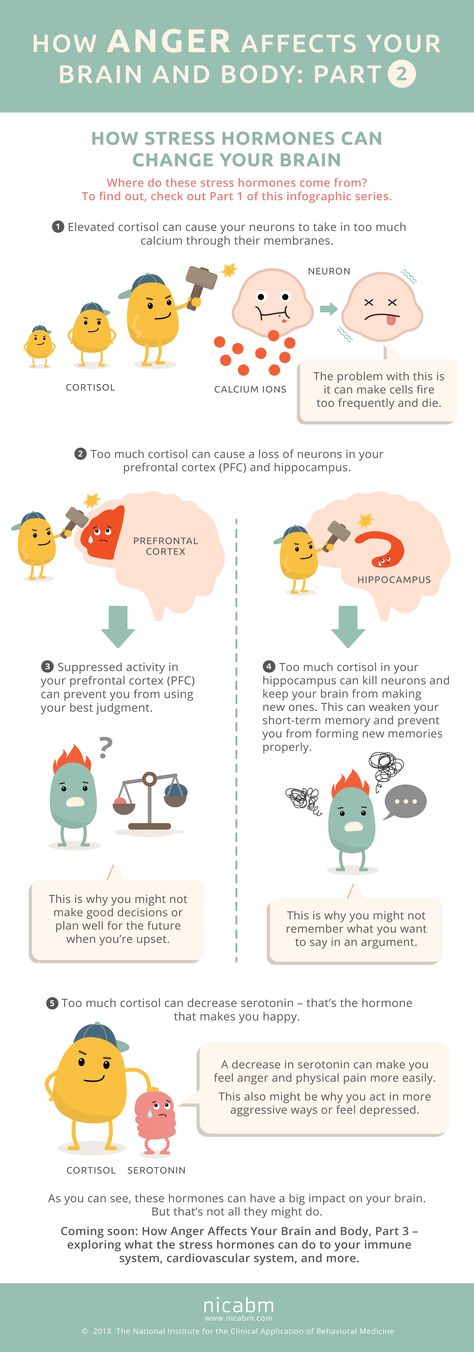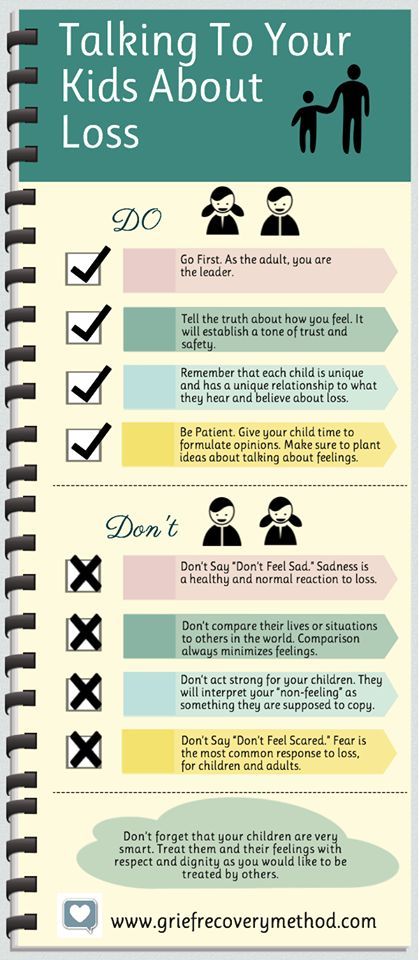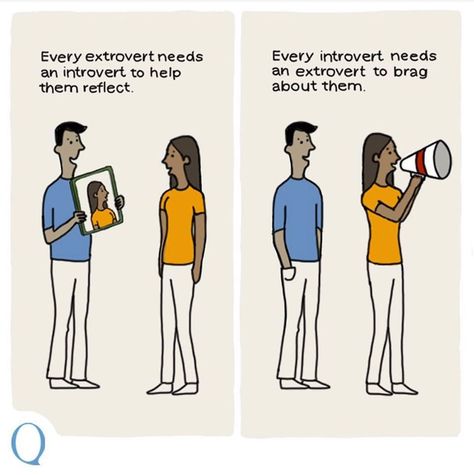Borderline personality disorder partner
How to Make It Work
People with borderline personality disorder (BPD) often have rocky relationships, both romantic and platonic. Romantic relationships present a unique set of challenges for people with BPD and for their partners.
Symptoms of BPD can cause constant changes in emotions.
For example, a person with BPD may be affectionate and doting, but within a few hours, their emotional state may switch. They may feel smothered or overwhelmed. This can lead them to push away the partner they had just been drawing closer.
With treatment and continual support from family and partners, people with BPD can have successful relationships. Read on to find out how it’s possible and what you can do if you or your partner has BPD.
Borderline personality disorder (BPD) is a condition that affects the way a person processes everyday emotions and reactions.
People with BPD are often impulsive and emotionally unstable. They may have intense episodes of anger, anxiety, and depression. These episodes can last several hours and be followed by a more stable period.
These episodes could also last several days and negatively affect the person’s work, relationships, or physical health. Some people with BPD are prone to self-injury, accidents, and fights. Suicide is also more common among people with BPD.
Another way to understand how a person with BPD experiences life is to realize they have a more difficult time returning to an emotional baseline.
When something exciting or positive happens, they may experience greater joy for longer. But the opposite is also true: If something bad happens, they may have trouble bouncing back.
For friends, family members, and potential partners of someone with BPD, these emotional peaks and valleys may seem chaotic, which can lead to intense, conflict-filled relationships.
A romantic relationship with someone with BPD can be, in a word, stormy. It’s not uncommon to experience a great deal of turmoil and dysfunction.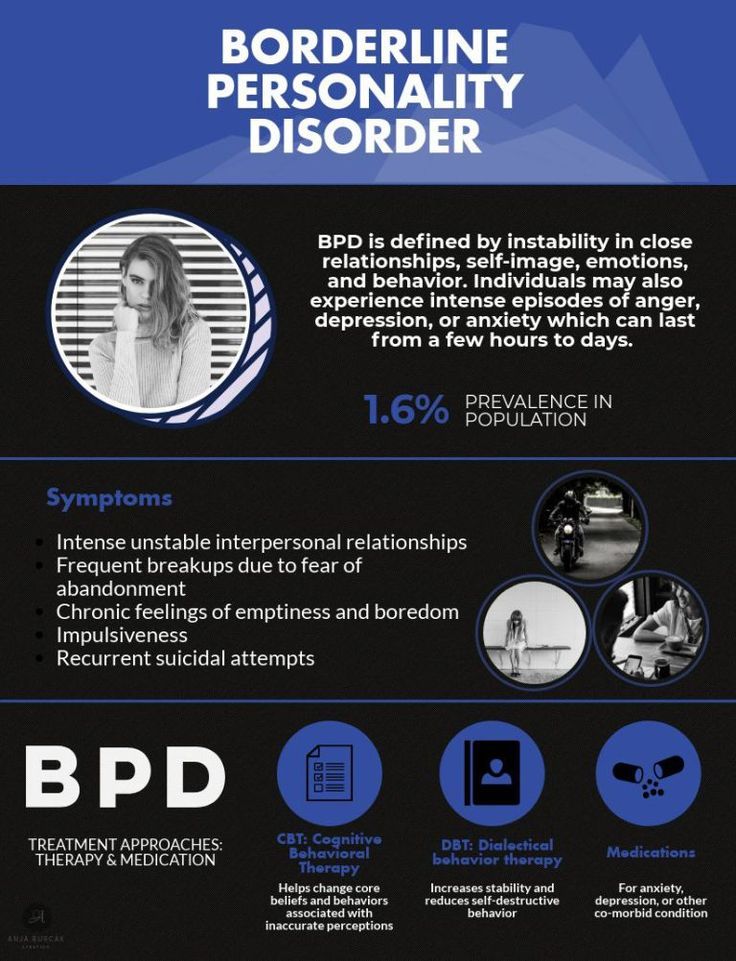
However, people with BPD can be exceptionally caring, compassionate, and affectionate. In fact, some people find this level of devotion from a partner pleasant. A person with BPD may also be very physical and eager to spend a lot of time with their partner.
At the same time, people with BPD are sensitive to abandonment or rejection. Many are hyperfocused on perceived signs that a romantic partner isn’t happy or may leave them.
When a person with BPD senses a shift in their partner’s feelings, whether real or imagined, they may immediately withdraw. They can become angry and hurt over something a person without BPD would not react to. They can even become obsessive.
These emotional switchbacks can be difficult to handle. Sometimes they can lead to uncomfortable public scenes. The impulsive behavior of a person with BPD may put that person or their partner at risk, too.
However, the stability of a partner may have a positive effect on the emotional sensitivities people with BPD experience.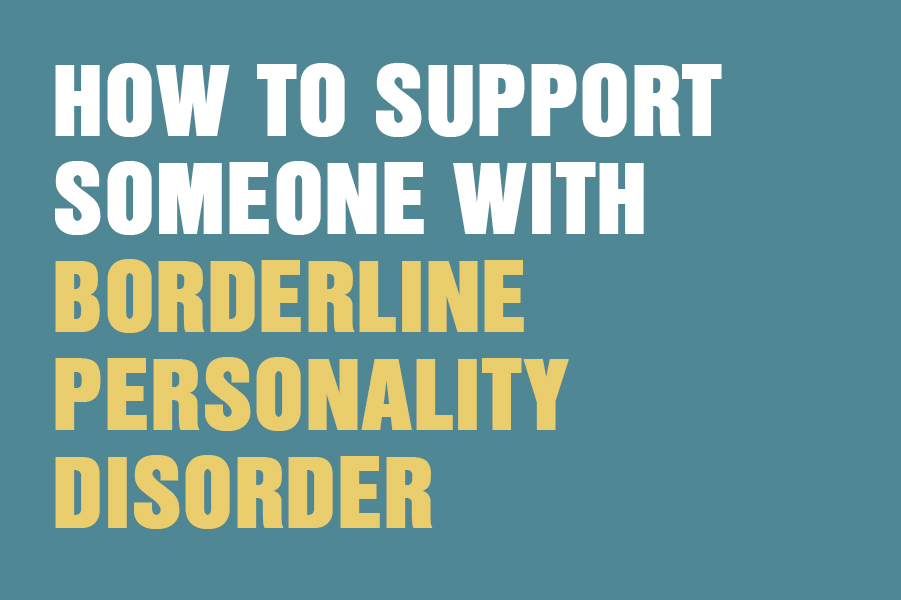 It may require a great deal of work from both partners, but long-term relationships and marriages are possible for people with BPD.
It may require a great deal of work from both partners, but long-term relationships and marriages are possible for people with BPD.
The most common BPD behaviors and symptoms could be detrimental to any relationship. If you have been diagnosed with the condition, you likely know this already. People with BPD are more likely to have many romantic relationships, which are often short-lived.
This could be because you purposefully broke off the relationship for fear your partner might do it first. It could also be because your partner wasn’t comfortable facing so much difficulty.
It’s important to know that you can have a healthy relationship despite your personality disorder. Treatment, along with a strong support network, can help you find stability in your emotional state and in your relationships.
Treatment won’t cure BPD, but these options can help you learn to cope with the symptoms and react in ways that aren’t as harmful to you or your partner.
treatment for bpdThe most common treatments for BPD include:
- Therapy.
Dialectical behavioral therapy is commonly used with people who have BPD. A therapist will help you learn to respond to emotional situations with reason and proper judgment. This will reduce the dichotomous thinking (the belief that everything is black and white) that so many people with BPD have.
- Medication. There is no medication that can treat BPD, but antidepressants, antianxiety drugs, and antipsychotics may help treat some of the symptoms.
- Hospitalization. If you begin showing signs of self-harm or suicidal ideation, a doctor may hospitalize you for observation and intensive therapy.
If you or your partner has BPD, you can find ways to cope with the cycles of emotions that the condition causes. This can help you build a stronger, more resilient connection.
ways to improve bpd relationships
- Learn about BPD. Part of caring for a partner with BPD is understanding what they’re experiencing.
Understanding the level of emotional disorder they experience can help you respond in a way that protects both of you from additional chaos.
- Seek professional help. Therapy can help people with BPD learn to better process emotions and events that upset them. Partners of people with BPD can also benefit from therapy. A professional can help a partner understand how to react, understand, and be supportive.
- Offer emotional support. Someone with BPD may feel very isolated because of their past. Offer your partner understanding and patience. It is possible for them to learn and have better behaviors.
People with BPD are good and compassionate, and they can have healthy relationships. It takes work, and lifelong challenges will remain.
Therapists and doctors can work with you or your partner to develop a treatment plan. These healthcare providers can help you address the BPD symptoms that are most damaging to you and to your relationship.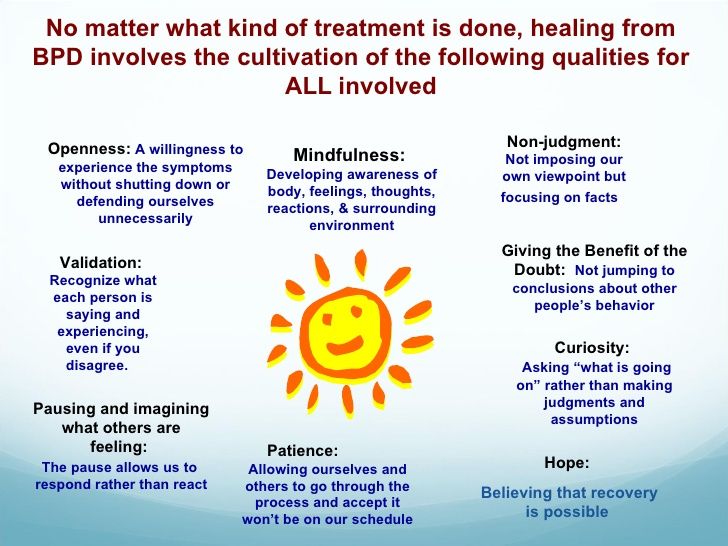
Symptoms, Causes, and How to Cope
Our personalities are defined by the way we think, feel, and behave. They’re also shaped by our experiences, environment, and inherited traits. Our personalities are a big part of what make us different from the people around us.
Personality disorders are mental health conditions that cause you to think, feel, and behave differently than most people. When untreated, they can cause distress or problems in the lives of people who have them.
One very common personality disorder is called borderline personality disorder (BPD). It’s characterized by:
- self-image issues
- difficulty managing emotions and behavior
- unstable relationships
One key behavior shared by many with BPD is known as “splitting countertransference,” or simply “splitting.”
Keep reading to learn more about splitting in BPD and how to cope with it.
To split something means to divide it. Those with BPD tend to characterize themselves, other people, and situations in black and white.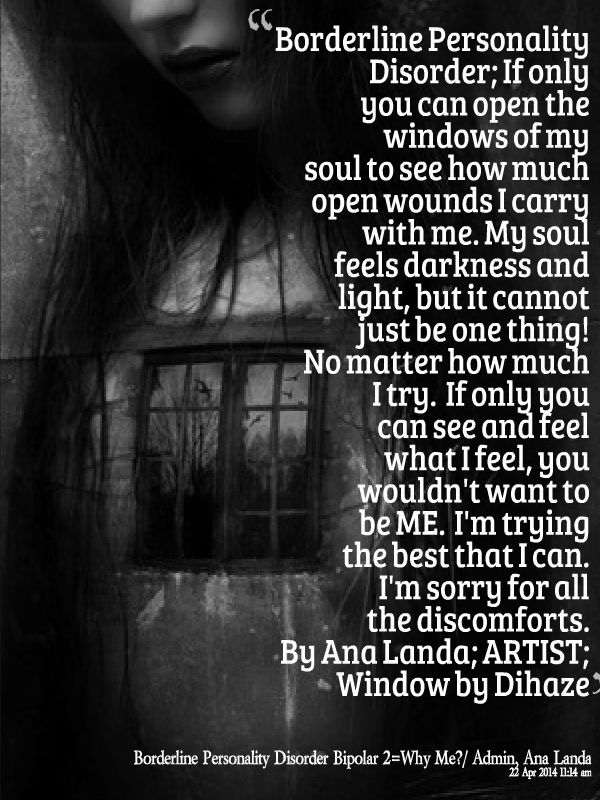 In other words, they may suddenly characterize people, objects, beliefs, or situations as either all good or all bad.
In other words, they may suddenly characterize people, objects, beliefs, or situations as either all good or all bad.
They may do this even though they know the world is complex, and good and bad can exist together in one.
Those with BPD often seek outside validation without considering their own emotions about themselves, others, objects, beliefs, and situations. This can make them more prone to splitting, as they attempt to shield themselves from anxiety caused by potential abandonment, loss of trust, and betrayal.
People with BPD often experience intense fears of abandonment and instability. To cope with these fears, they might use splitting as a defense mechanism. This means they might cleanly separate positive and negative feelings about:
- themselves
- objects
- beliefs
- other people
- situations
Splitting often occurs cyclically and very suddenly. A person with BPD can see the world in its complexity. But they often change their feelings from good to bad rather frequently.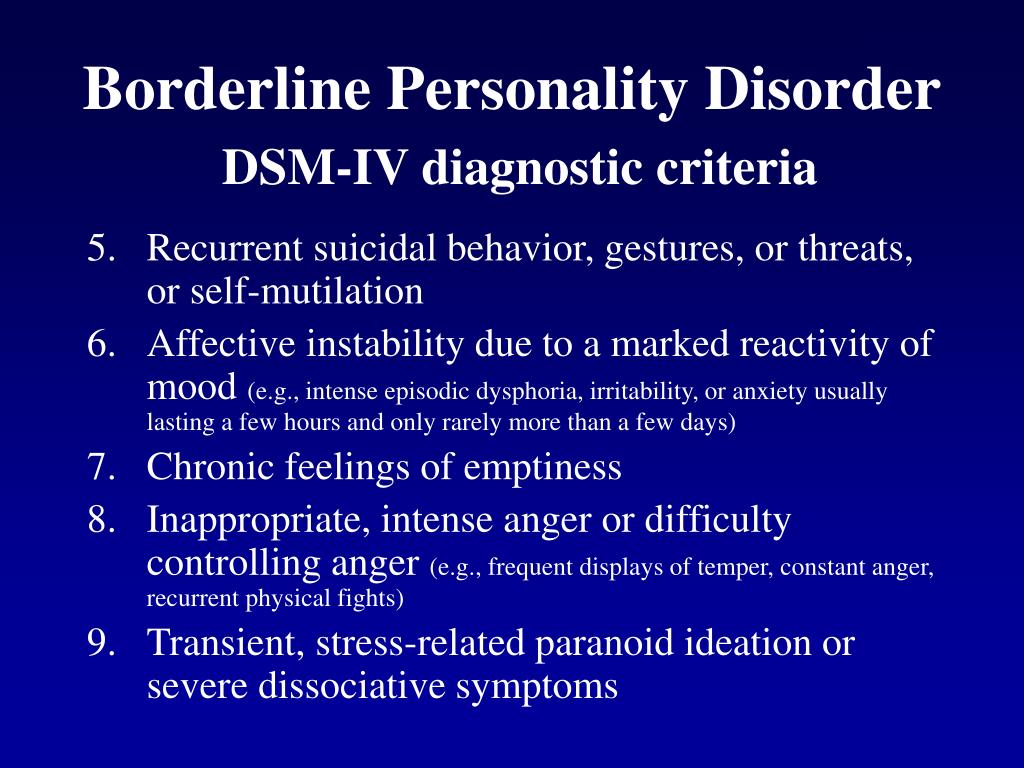
A splitting episode can last for days, weeks, months, or even years before shifting.
What might trigger a splitting episode?
A split is typically triggered by an event that causes a person with BPD to take extreme emotional viewpoints. These events may be relatively ordinary, such as having to travel on a business trip or getting in an argument with someone.
Often, triggering events involve minor separations from someone they feel close to and sparks fear of abandonment.
You can identify splitting most commonly through the language of a person with BPD. They’ll often use extreme words in their characterizations of self, others, objects, beliefs, and situations, such as:
- “never” and “always”
- “none” and “all”
- “bad” and “good”
Here are a couple of examples:
Example 1
You’ve been feeling good about yourself, generally. You’re out on a road trip one day and make a wrong turn that gets you temporarily lost. Suddenly, any good feelings you have about yourself disappear, and you get very down on yourself.
Suddenly, any good feelings you have about yourself disappear, and you get very down on yourself.
You may say negative things to yourself or others, such as “I’m such an idiot, I always get lost” or “I’m so worthless, I can’t do anything right.”
Of course, making a wrong turn when driving doesn’t mean a person is worthless. But a person with BPD can split their perception to avoid the anxiety of others perceiving them as worthless if they do the job first.
Example 2
You have a mentor you deeply admire. They’ve helped you professionally and personally, and you begin to idealize them. They must be without flaw if they’re so successful in their professional and personal lives. You want to be like them, and you tell them so.
Then one day your mentor undergoes turmoil in their marriage. You view this as a sign of weakness. Suddenly, you view your mentor as a complete fraud and failure.
You want nothing to do with them. You completely separate yourself and your work from them and look for a new mentor elsewhere.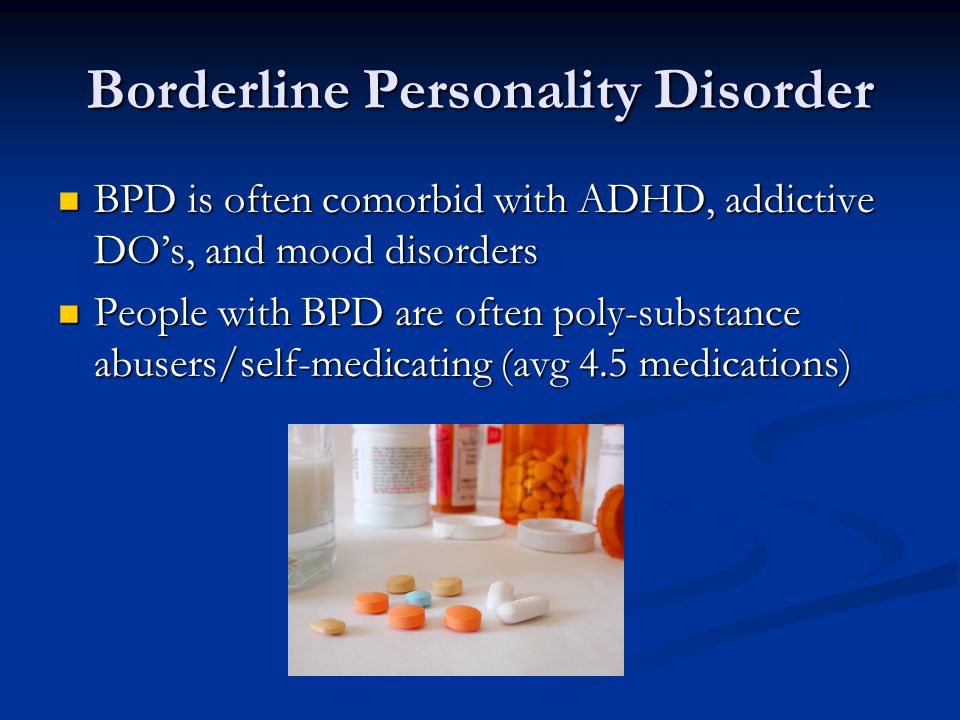
Such splitting can leave the person being hurt, annoyed, and confused by the sudden shift in your perception.
Splitting is an unconscious attempt to safeguard ego and prevent anxiety. Splitting often leads to extreme — and sometimes destructive — behavior and personal turmoil in relationships. Splitting often confuses those who are trying to help people with BPD.
Splitting is an unconscious attempt to safeguard ego and prevent anxiety.
Those with BPD often report having intense and unstable relationships. A person who’s a friend one day may be perceived as an enemy the next. Some relationship traits of a person with BPD include:
- difficulty trusting others
- irrationally fearing others’ intentions
- quickly cutting off communication with someone they think might end up abandoning them
- rapidly changing feelings about a person, from intense closeness and love (idealization) to intense dislike and anger (devaluation)
- rapidly initiating physically and/or emotionally intimate relationships
Splitting is a defense mechanism commonly developed by people who have experienced early life traumas, such as abuse and abandonment.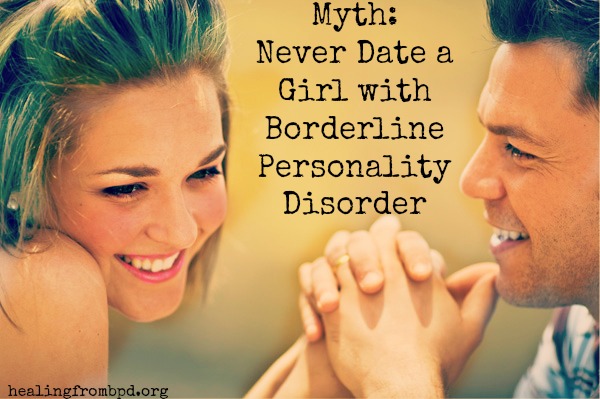
Long-term treatment involves development of coping mechanisms that improve your perspective of the events happening in your life. Reducing anxiety can also help.
If you need help dealing with a splitting episode in the moment, here’s what you can do:
- Calm your breathing. A surge of anxiety often accompanies splitting episodes. Taking long, deep breaths can help calm you and prevent your extreme feelings from taking over.
- Focus on all your senses. Grounding yourself in what’s happening around you at a given moment can be a good way to distract yourself from extreme feelings and help you better put into perspective what’s happening around you. What can you smell, taste, touch, hear, and see in a moment?
- Reach out. If you find yourself splitting, consider reaching out to your mental healthcare professional. They may be able to calm you and help ease the split while it’s happening.
It’s not easy to help a person with BPD who experiences splitting. You may feel at the mercy of their symptoms. If you feel capable enough to help, here are some tips:
You may feel at the mercy of their symptoms. If you feel capable enough to help, here are some tips:
- Learn as much as you can about BPD. It’s easy to get offended by the up-and-down behavior of someone with BPD. But the more you know about the condition and how it can affect behavior, the more understanding you’ll have about your loved one’s behavior.
- Know your loved one’s triggers. Often, the same events over and over again are a BPD trigger. Knowing your loved one’s triggers, alerting them, and helping them avoid or cope with those triggers may prevent a splitting cycle.
- Understand your own limits. If you feel unequipped to help your loved one cope with their BPD splitting episodes, be honest. Tell them when they should seek professional help. Here’s how to access therapy for every budget.
BPD is a mental health disorder characterized by extremes in the way a person thinks, feels, and acts. Many people with BPD form extreme characterizations about themselves, others, objects, beliefs, and situations during episodes called splitting.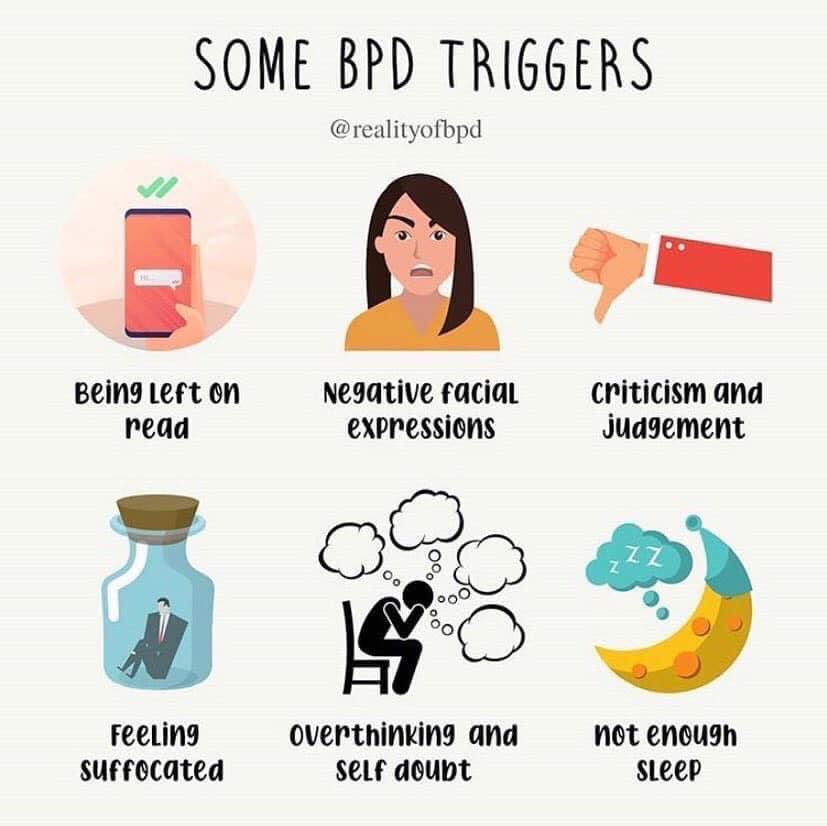
Situations associated with anxiety often trigger splitting episodes. While it may be difficult at times, coping with splitting symptoms is possible.
Getting professional help can best prepare you to cope with your BPD and splitting cycles.
How to live with the "border guard" | PSYCHOLOGIES
19,766
A person among people
Life with a "border guard" is often compared to a "roller coaster" - ups and downs, good periods filled with love and happiness, then emotional outbursts, fits of rage or attempts at tight control . This causes confusion, helplessness, despair and the obvious question: “How to deal with this?”
Stop walking on eggshells!
Authors of Stop Walking on Eggshells. Living with someone with borderline personality disorder Paul Mason and Randy Kroeger answer this question and more. They created a kind of instruction, a guide for those who live with the "border guards".
Reminding that diagnosis is the task of doctors, psychiatrists, Paul Mason and Randy Kroeger provide useful information about this type of disorder, not fully understood by specialists.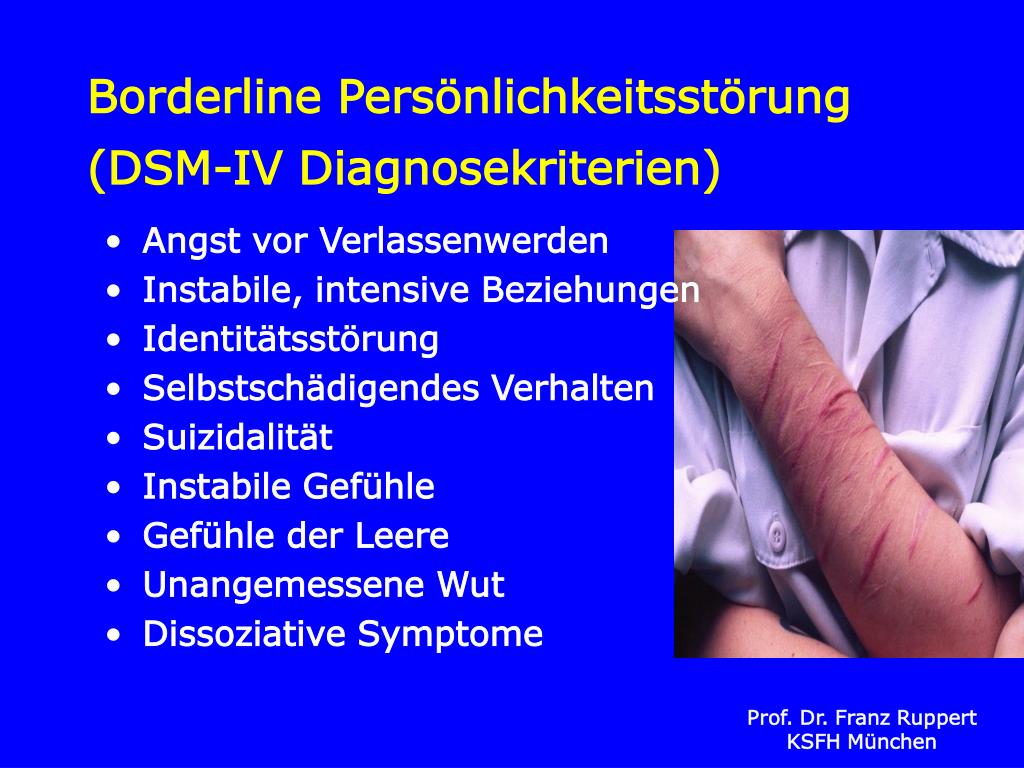
“The definition of a personality disorder implies that it causes suffering both for the person himself and for those who interact with him. The description of BPD seems so negative that people with this diagnosis often feel stigmatized.
It is extremely important to remember that borderline personality disorder and its owner are not the same thing. If you live with a borderline person, it can be difficult to separate the diagnosis from them. In fact, only a person with BPD can control his thoughts, feelings and behavior. And this is important to understand for the recovery of SPs and for yourself.”
The following clearly structured chapters provide information about BPD itself and the inner world of a person with this disorder. The writing of the book was preceded by a long period of communication with the "border guards" and their relatives, the collection and systematization of information shared by real people.
That is why the "manual" covers such a large layer of problems - and each question is given a clear answer.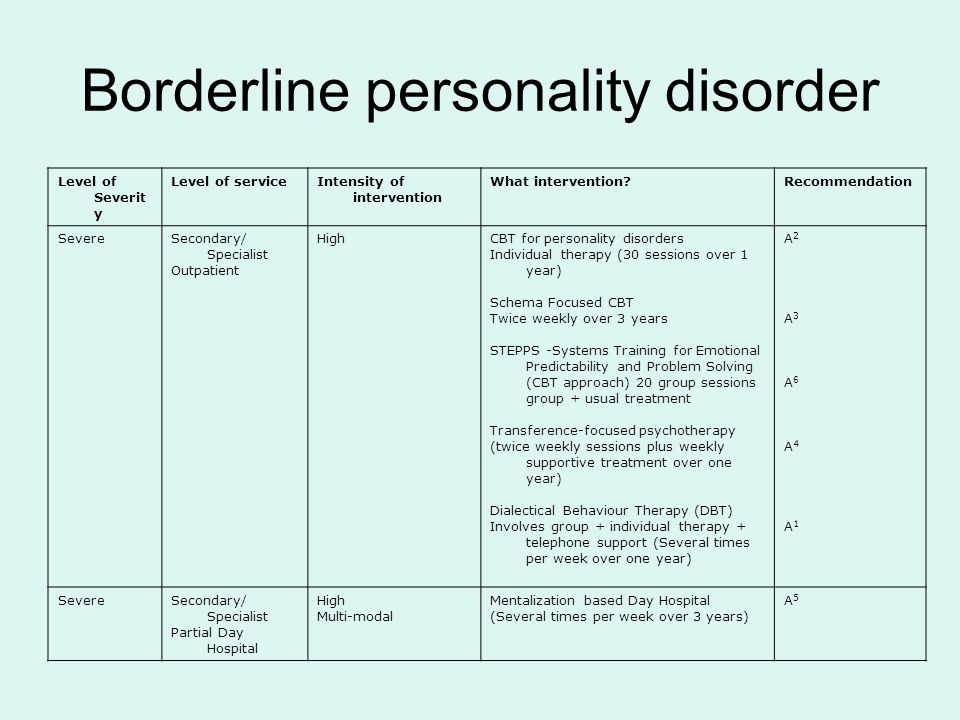 In addition, the reader has the opportunity to look at the situations described from different angles - through the eyes of the people with BPD themselves, their parents, children or partners and experts.
In addition, the reader has the opportunity to look at the situations described from different angles - through the eyes of the people with BPD themselves, their parents, children or partners and experts.
How to regain control over your own life if there is a "border guard" next to you? How to resolve many specific issues? How to be guided in the search for a psychotherapist, what other literature on the topic can be read? And what exercises will help to cope with their own experiences and maintain balance? All the answers are in the book by Paul Mason and Randy Kroeger.
Here is a fragment of the text of chapter 2 “The inner world of the “border guard”: the definition of BPD. PRL Criteria".
"Desperate attempts to avoid real and imagined situations in which they will be abandoned"
Imagine the horror you would feel if you were lost as a child in Times Square in New York. A second ago, mom was there, holding your hand - and suddenly she was carried away by the crowd. You look around, panicking, trying to find her.
You look around, panicking, trying to find her.
This is how people with BPD feel most of the time - isolated, anxious, terrified at the thought of being alone. Caring, supportive people are like friendly faces in a crowd.
But if one takes a careless step, which can be interpreted as a sign of an impending departure, the SPs will panic and react. For example, an explosion of rage or a plea "Just don't leave!". It doesn't take much to trigger this reaction: One borderline woman stopped her neighbor from leaving her apartment to take her clothes to the laundry.
Fear of abandonment can be so strong that it literally overwhelms an SP: when a man told his SP wife that he probably had a deadly disease, she lashed out at him for going to the doctor.
If your SPs experienced neglect as children or grew up in a highly dysfunctional environment, they may have learned to deal with fear by denying or suppressing it. They had plenty of opportunities to practice, so the original emotion might not be felt.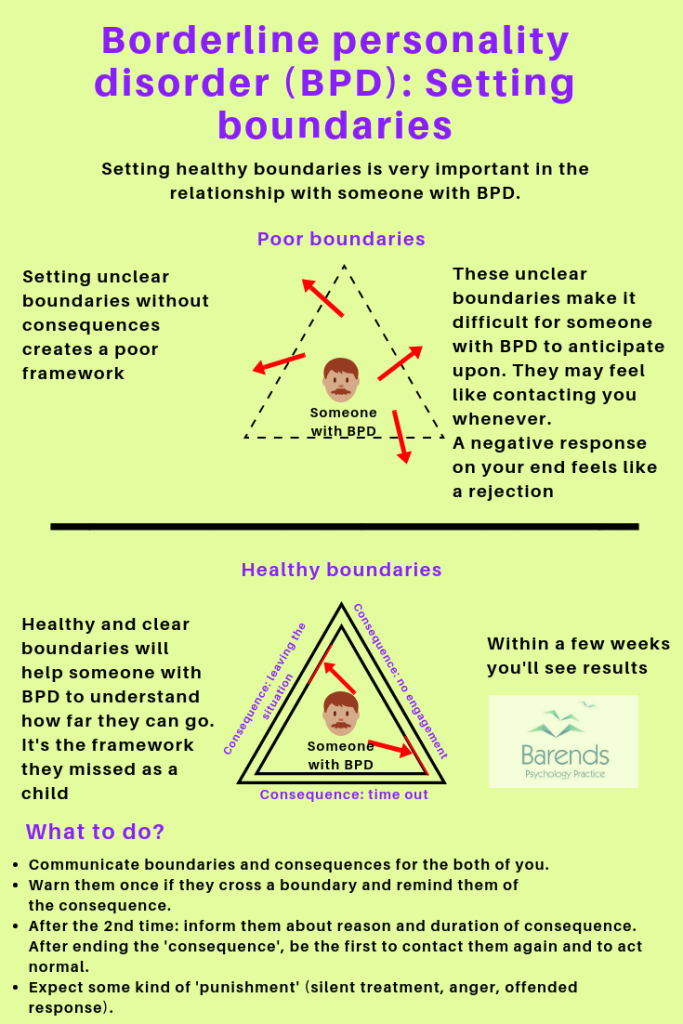
If SPs get upset or angry, try to remember if some circumstance could have triggered the fear of abandonment.
Armin (not borderline)
If I'm five minutes late on my way home from work, my wife will call me. She constantly sends messages to the pager. I can't go out with my friends anymore because she reacts so strongly to it. Messages on the pager came, even if we were going to the movies. It was so stressful that I stopped seeing my friends without her.
Sometimes people with BPD will immediately warn about their fear of being abandoned. However, no less often this fear is expressed in other forms, for example, through rage. Feeling vulnerable and out of control provokes anger.
Tess (borderline)
If I feel like I've been abandoned, a whole range of feelings arise: isolation, horror, loneliness. I panic. I think that I was betrayed, used. I think I will die. Once I called my young man, and he replied that he would call back later, as he is now watching TV.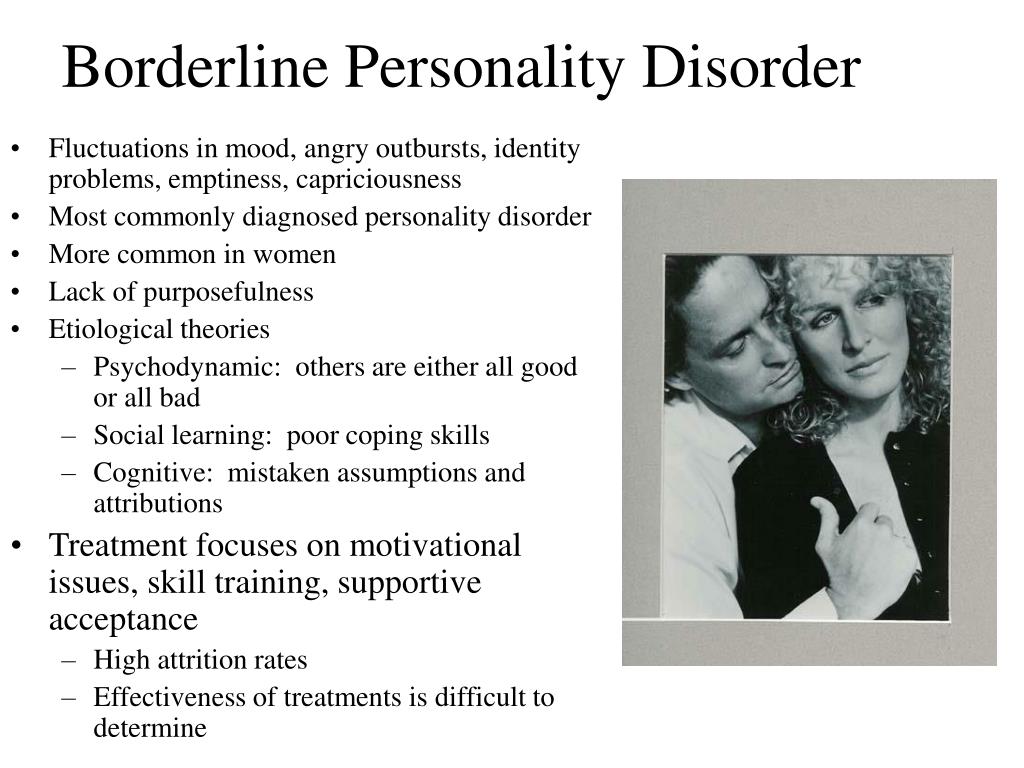
I took up ironing to pass the time. But he didn't call. I waited. He didn't call. And the terrible feeling that I was abandoned returned. It hurt so much, because just the day before, I caught myself thinking that I believed in his love for me.
By the time the phone rang at ten o'clock, I had already decided that we needed to break up, I wanted to leave him before he left me. And all this time he was just watching the movie. I felt so stupid; but the pain, the fear like a knife in the heart - it was all real.
Photo Source: Getty Images
New on the site
How rest and exercise affect your career: proven ways to work more efficiently and productively
"I choose men who are disappointed in girls to show them true love" once every one or two months: a career is more important to him than a relationship”
Sex without obligations: a big discussion with psychologists — study all the pros and cons
“Once in a lifetime”: how to choose a spouse and guarantee happiness — a psychologist’s opinion
A normal man of the 21st century: what is he like? 7 key ideas
Quiz: Who do you think about more - yourself or others?
“The future son-in-law behaves strangely.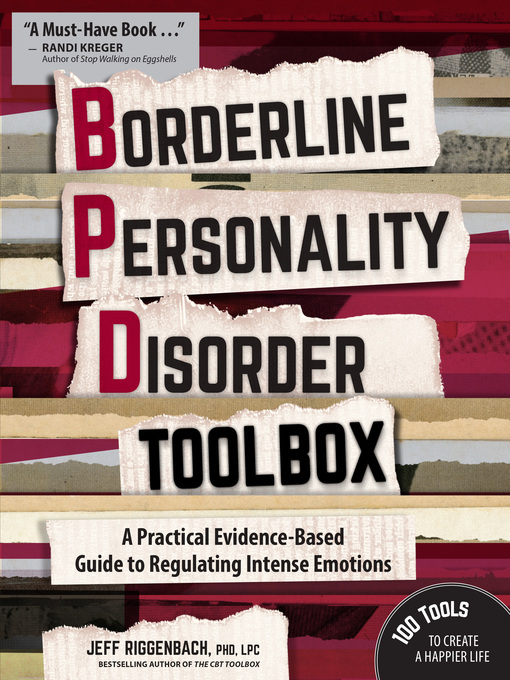 What should I do if we work together?”
What should I do if we work together?”
"I hate you, just don't leave me": how BPD manifests itself in relationships
BPD can manifest itself in a variety of ways in relationships. In this article, we will tell you what difficulties couples face in which one of the partners suffers from a personality disorder.
BPD in relationships: features of the manifestation of the disorder
BPD - the term “borderline personality disorder” is hidden behind three letters. A person with this condition experiences habitual emotions much longer and deeper, while he often has a craving for self-harm, a high level of anxiety and desocialization.
In addition, they are often disturbed by the feeling of total loneliness and emptiness. The fear of being abandoned and unwanted literally makes them idealize a partner - a phenomenon mental health professionals call a favorite person - "beloved, special person."
Let's take a closer look at exactly how BPD manifests itself in a relationship, and tell you what to do if your lover lives with such a disorder.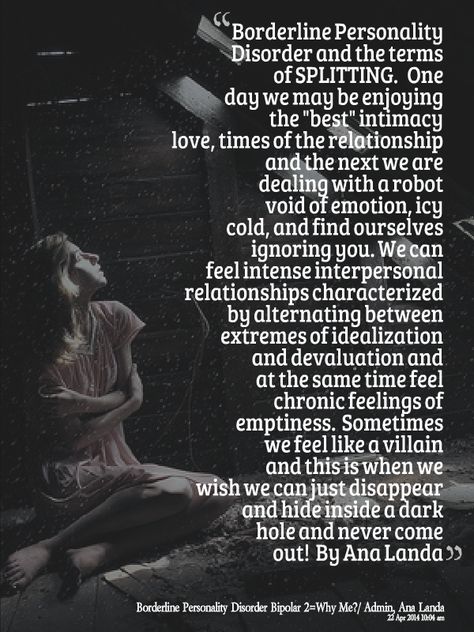
The most tender, the most dear
In relationships, a person with borderline personality disorder is characterized by codependency: they idealize someone they like in a matter of minutes, and then, if he commits at least one miserable offense, trust in him goes away at once -two.
Anna (name has been changed) encountered this and told Zvezda about her problem. For a long time, the woman did not understand what kind of condition she was dealing with, until she noticed how her attitude towards an incompetent psychologist had changed dramatically, which allowed herself to cross all sorts of boundaries.
According to the interviewee, an acquaintance promised her to get antidepressants - Anna was running out of pills, and she did not want to go for a new prescription. However, she did not keep her promise.
“A month passed, I was without pills, I felt bad again. I was very offended by her. Before that, I idealized her, and then because of this one little thing, I began to devalue and notice only bad things in her.
I began to hate her, despise her, I began to feel sick from our physical proximity. At some point, I said that I would not come again. And that's all."
The main trouble of both the person with BPD and his partner, whether in a platonic or romantic relationship, lies in several aspects. Let's talk about this further.
Social stereotypes
Often the media broadcast views of love that are inherent in just those who suffer from a disorder. Standardized rom-com shows that if you love a person, you will do everything to stay with him, even if it means almost merging together.
This gives rise to a strong dependence of one on the other, because in a healthy relationship adequate separation is important: partners should understand that they are not halves of something in common, but independent individuals with a certain common information field.
Failure to diagnose BPD in time
It is easy to confuse it with anxiety-depressive disorder or bipolar disorder at first, and at best the person receives treatment that does not match their diagnosis.
At worst, he himself runs the risk of attributing his condition to character traits or "temporary difficulties", which makes him not seek qualified help. "What's the point?" he will surely say.
How to understand that you are the whole world for your partner
When mindfulness is pumped over, a person may notice oddities in the behavior of a lover or friend by some disturbing signs. Specialists of the portal The Mighty, which deals with mental health issues, noted such characteristic features.
1. He goes from extreme to extreme
At first, a person with BPD deeply loves and respects an acquaintance, but as soon as something changes - be it demeanor, tone of voice, gestures - he may notice elements of disrespect in this and devalue all the actions of a loved one.
At the same time, the acquaintance himself may confuse the phase of idealization with platonic love: he sees how he is literally idolized, and at first he takes it for sincere feelings, but in no way for a person’s strong need to be with someone, no matter what.
2. He sincerely needs you
When you leave a friend or partner with BPD for a while, he literally suffers - both mentally and physically. Constant calls can be used, they say, in order to find out how things are going, pleas to return, even if the person has gone on a business trip, or threats to do something with themselves.
3. Directly says that without you he is nothing
BPD often manifests itself in relationships in such a way that a person with this disorder finds an island of calm in the midst of the seething ocean of life in the second half. They greatly appreciate the beloved - so much so that such an attitude can be replaced by a uniform obsession. Even if the relationship is objectively time to end, a person will still hold on to them to the last.
Addiction also manifests itself at the level of emotions: if a loved one is sad or angry, the first thing a person with BPD thinks is that he is to blame for what happened.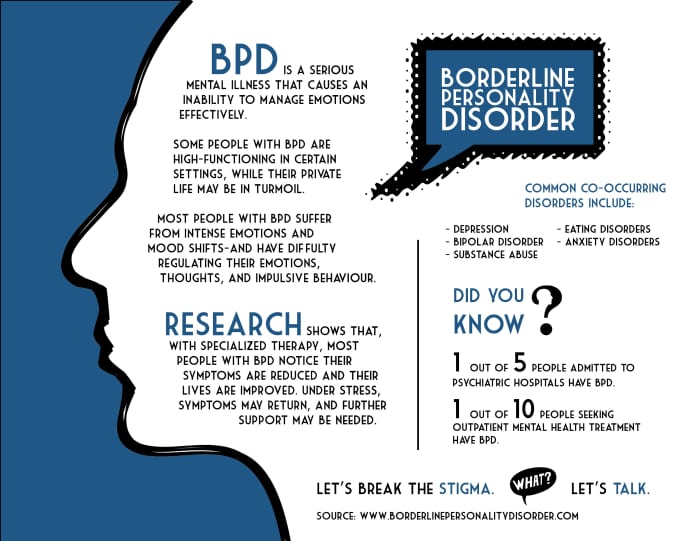 Later, he, too, will yearn and grieve, mirroring the state of a friend.
Later, he, too, will yearn and grieve, mirroring the state of a friend.
Thus, a relationship in a person with borderline personality disorder, especially if the condition is not corrected with the help of specialists, runs the risk of becoming codependent.
Read more about the signs of BPD in this article. In this material, we also give examples of the manifestation of borderline disorder in the stars, and also talk about how exactly the presence of a diagnosis in a person is determined.
How to get out of the vicious circle
Here it is important to work out both the condition of a person with BPD and the mental problems that his loved ones might have. To begin with, a person who has become a favorite person should understand that such an alignment of events is not his choice and not the efforts of a partner with BPD.
The fact that he has become “everything and nothing” in the eyes of another is more like a coincidence: often a person who suffers from a disorder can see hope and support in a loved one, even if he did not give specific signals - this is how he is arranged relationship building mechanism.
Then it is worth gradually starting to separate - this is a long and difficult stage, but it is important to start it in order to get out of codependency later. You, as a healthier person, should be reminded: your thoughts and desires should not affect the state of a friend. Equivalently and vice versa.
Help for Borderline Personality Disorder
If you feel that you do not have enough emotional resources, do not hesitate to seek the help of a psychotherapist. Often in the correction of BPD, dialectical-behavioral therapy is used, which combines elements of cognitive-behavioral analysis and treatment aimed at strengthening self-support skills.
Such an approach will allow a person with BPD to understand what exactly justifies his reactions, as well as to find support in himself. This will allow him not to resort to behavior leading to codependency.
Sometimes a person with BPD may be prescribed medication, but it should be understood that this will only improve the mental state for a short time.


